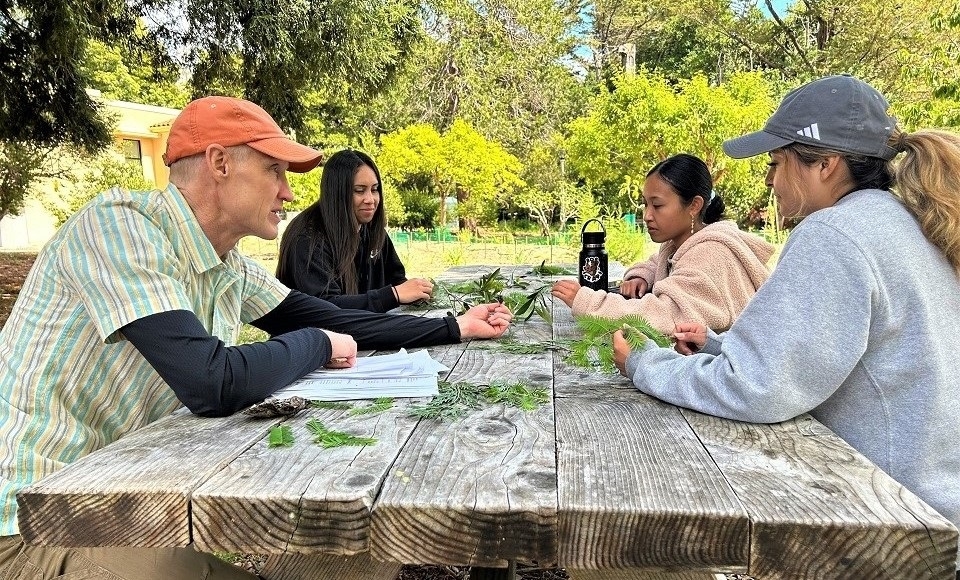Breadcrumbs
- News
- News Archive
- Ecology Class Focuses Research On Local Insect Biodiversity

Students in Dr. Erik Nelson’s Ecology and Evolution Lab at Dominican University of California do not have to go far to conduct research examining the biodiversity of California’s habitats.
Much of their field work in the School of Health and Natural Sciences can be done in their own backyard – with both the Dominican campus and locations throughout Marin County serving as prime spots for field sampling.
Take, for example, a recent project in which students studied insects in order to understand the impact of native versus non-native plants on insect biodiversity.
Using large nets, the students collected insects from five native and non-native habitats on campus: the native California Buckeye, Redwood, Madrone and Live Oak trees and non-native lawn grass. The students transferred the insects from each habitat into a zip lock bag – eventually collecting eight bags from each of the five habitats. Then they counted both the variety of species and number of insects in each bag.
“This work gives you everything you need to calculate biodiversity for each plant type,” Dr. Nelson says.
EXPLORE OUR UNDERGRADUATE PROGRAMS
What the students are looking for in terms of measuring biodiversity was the variety rather than the number of insects collected from each habitat. A higher number of insects collected per habitat does not necessarily mean higher biodiversity.
While the largest number of insects (91) was collected from the lawn grass, the students noted only nine varieties of insects from this habitat. However, while only 16 insects were collected from the Redwood tree, the students counted 14 different varieties of insect from the native tree.
“Native plants typically attract a high diversity of insects,” Nelson says. “Calculating insect diversity is a good way to show the students how important native species are for an ecosystem.”
Nelson, who earned his PhD in Insect Ecology from the University of California, Davis, designed the Ecology and Evolutionary Lab in the Department of Natural Sciences and Mathematics and to give students hands-on insight into the topics studied in the accompanying Ecology and Evolution course. These include environmental policy, restoration ecology, climate change, and water policy. In the lab, students gain experience in experimental design, statistics, and data analysis.
SCHEDULE A CAMPUS TOUR
“The lab allows students to connect concepts in ecology,” Nelson says. “Students investigate the interactions between species and what influences biodiversity.”
Soon, Dominican students will have another native habitat to serve as an on-campus lab in which to study the diversity of insects: the plants in the newly installed Daniel Stralka Memorial Pollinator Garden are developing quickly. Nelson is sure this resource will further reinforce the important link between native habitats and biodiversity.
Photo above of (left to right) Dr. Erik Nelson and students Alyssa Rue, Melea Pedrosa, and Caitlyn Perales inspecting tree branches and twigs for insects.